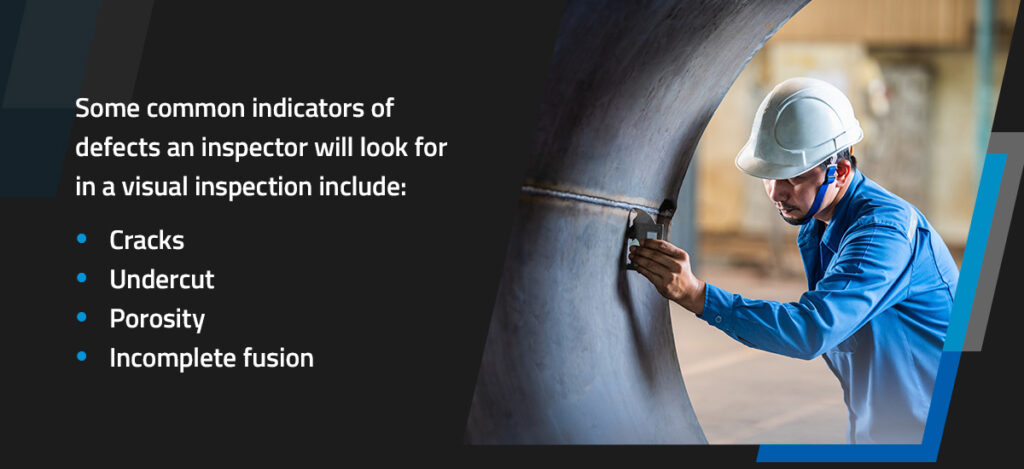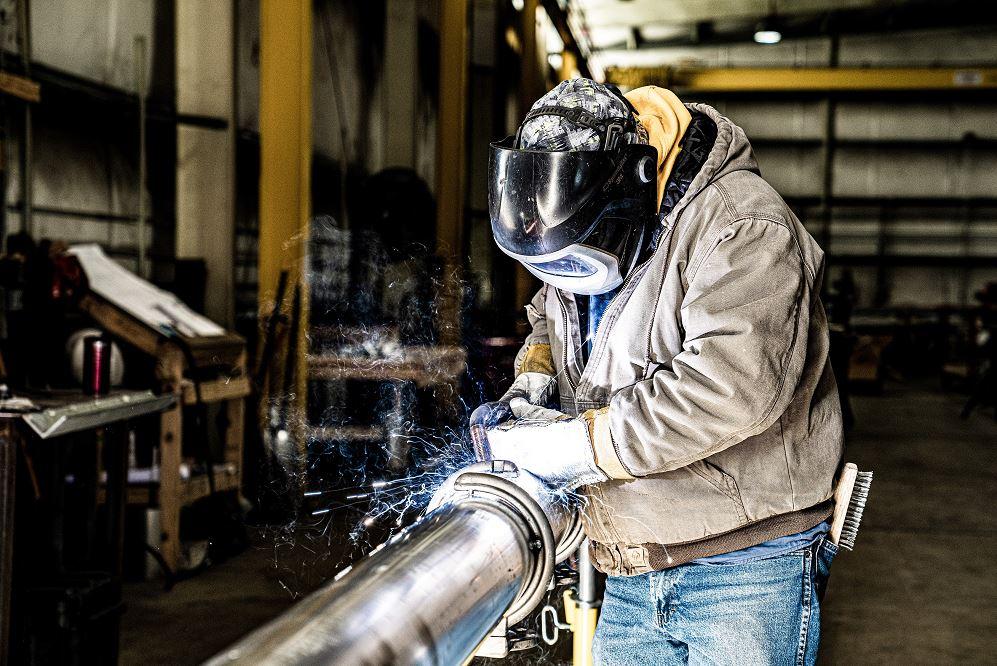Aws Cwi - Truths
Table of ContentsThe 9-Second Trick For Aws CwiThe 8-Minute Rule for Aws CwiThe Definitive Guide to Aws CwiFacts About Aws Cwi RevealedAws Cwi for DummiesAws Cwi Can Be Fun For EveryoneGetting The Aws Cwi To Work
Welding evaluation is a crucial line of job. Any type of company that does any type of sort of welding needs welding quality control examiners to make certain that the work is done right which bonded structured are secure. Welding Inspector. The task responsibilities of a welding assessor can supply wonderful variety while the gaining capacity may boost dramatically with experience.
If you have a metalwork business, understanding exactly how welding works and why welding assessments are vital is important. Welding assessments are required to guarantee criteria are met and threats understood.
What are these methods, and which welding assessment strategies are the most commonly utilized and trustworthy? Let's take an appearance. A welding inspector can examine the weld and its features without triggering damage using non-destructive testing (NDT) techniques. In the UK, there are five typical NDT assessment techniques for welding.
The 25-Second Trick For Aws Cwi
This sort of welding inspectionexamination is affordable and can be performed while work on a structure or material is being completed. Welding evaluation businesses will frequently begin with a visual assessment to validate there are no evident flaws. Visual welding checks, are restricted due to the fact that just surface mistakes may be identified - CWI Welding Inspector.

In addition, this sort of examination will not work with all surface areas, such as those with a thick layer of paint. Surface cracks that can not be seen with the human eye are found using fluid penetrant examination or PT. This strategy is frequently utilized to find leakages triggered by welding mistakes. PT can be made use of to examine magnetic and nonmagnetic materials, as opposed to Magnetic Bit Inspection.
Plus, PT can locate problems in materials with complex frameworks. Liquid Penetrant Examination has constraints. This is due to the truth that only surface defects can be found. In addition, appropriate pre and post-inspection cleaning is needed for this welding assessment. Both inner and external faults can be found with ultrasonic screening, frequently called UT weld assessment.
Getting The Aws Cwi To Work
These guidelines help inspectors in ensuring that devices and products might be made use of effectively and securely. Examinations are done by qualified welding assessors using a range of tools and approaches. These assessments give information concerning the dimension and quality of the weld. Most significantly, they aim up any type of blemishes or shortcomings.
These files consist of Welding Treatment Specifications (WPS), welder certifications, examination documents, project specifications, and suitable welding codes. A great CWI understands and recognizes the requirements and code. He or she makes sure that the WPS and welder certifications adjust to those demands. Prior to welding, CWIs inspect both base steels and filler steels, keeping in mind that they abide by the WPS and project requirements.
During construction, CWIs check a variety of items to ensure that the WPS and project requirements are being appropriately followed. These products include interpass temperatures, appropriate combination, cleaning, traveling rate, and weld deposit size. Examination throughout welding is often neglected, however it is a critical component of making sure weld top article quality.
10 Easy Facts About Aws Cwi Described
After a weld is finished, a CWI will check it closely, checking and measuring any kind of discontinuities such as porosity, undercut, fractures, incomplete combination, or poor profile. The dimension of the weld is additionally determined for uniformity to the project specifications. If any of the discontinuities do not abide by job requirements, they are taken into consideration issues and must be repaired.
AWS calls for an eye test and a mix of education and learning and work experience. According to PayScale, an ordinary welder can anticipate to gain $30,000 to $40,000 a year.

Not known Facts About Aws Cwi
CWIs have excellent job possibilities and high pay because they have to be knowledgeable regarding every component of the welding process in order to evaluate weld high quality and take obligation for each task. But understanding alone is not nearly enough. An effective CWI is additionally a reliable communicator. He or she have to be able to plainly recognize everyone's role in the task and accurately report the status and top quality of the project to stakeholders.
CWIs have to have thick skin and the capability to speak freely with stakeholders, also when they have to interact something they do not intend to listen to. If a CWI lies regarding issues due to the fact that he or she intends to please the employer, the safety and security of the public is placed at stake.
Welding assessors provide quality assurance by keeping track of the whole welding process. They use a selection of devices to check welds.
The Greatest Guide To Aws Cwi
The primary objectives of weld assessment and high quality control are preventing welding issues by taking restorative actions beforehand in the production phase, and making sure the quality of completion product. As an example, a timely inspection can stop a whole set of bad welds arising from poor joint sanitation or fit-up.
Often, it might be needed to test the WPS certification by carrying out examinations on weld coupons (test pieces). Validating the base steel and welding consumables compliance with the appropriate specs. Evaluating for joint cleanliness and proper fit-up. Making sure that the joint layout and weld preparation is compliant with the WPS and suitable welding criteria (ASME, AWS, API).

Occasionally, pre-welding examination may find irregularities that are within code constraints yet might position an issue at a later phase in manufacturing. That's why it's important for the welding inspector to be accustomed to the whole production procedure and to be experienced with the bonded equipment. Inspection throughout the welding procedure is important for spotting the weld flaws and avoiding an incorrect welding technique from triggering massive weld denials throughout the whole task.
Indicators on Aws Cwi You Should Know
Another example would certainly be not inspecting for extreme distortion, which would certainly result in weld being rejected and pricey rework if done on expensive devices like warmth exchangers, distillation columns, and boilers. A few of the basic high quality control checks throughout welding are: Verification of pre-heat and interpass temperatures and making sure that they are within restrictions specified in the WPS.
Verify the protecting gas and change are as advised in the WPS. Reviewing sequencing procedures for distortion control. Tack weld high quality assessment. Validating a correct fit-up before welding. Examining the root pass and successive weld passes. Inspecting the root condition prior to welding the opposite side. Making certain that slag, silica, and various other contaminants are removed between passes.